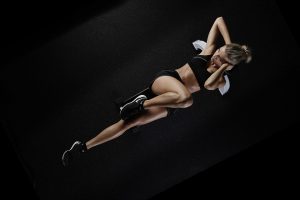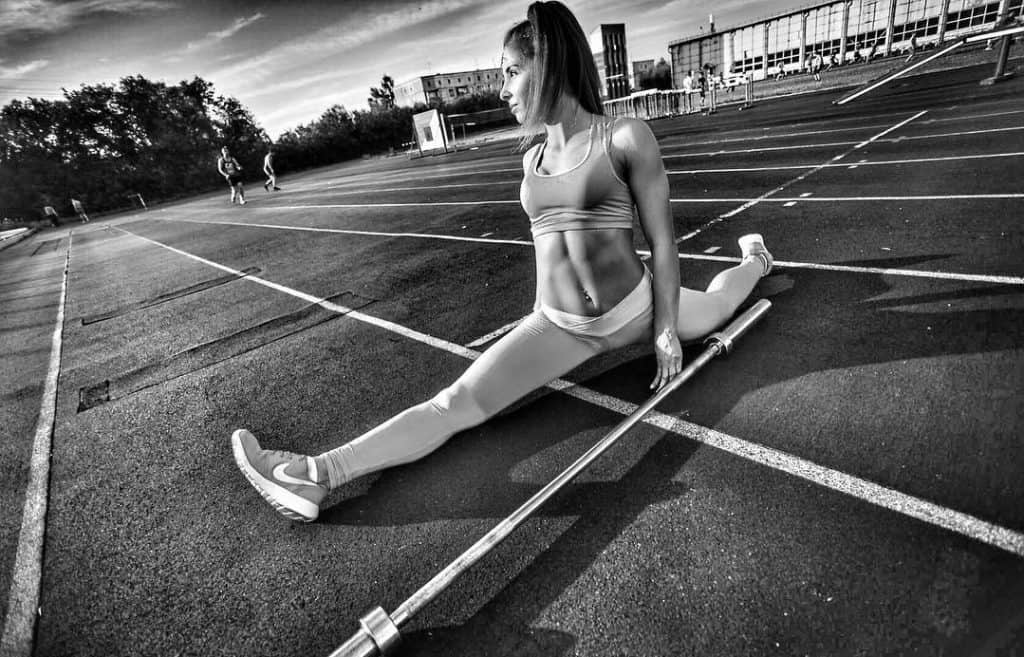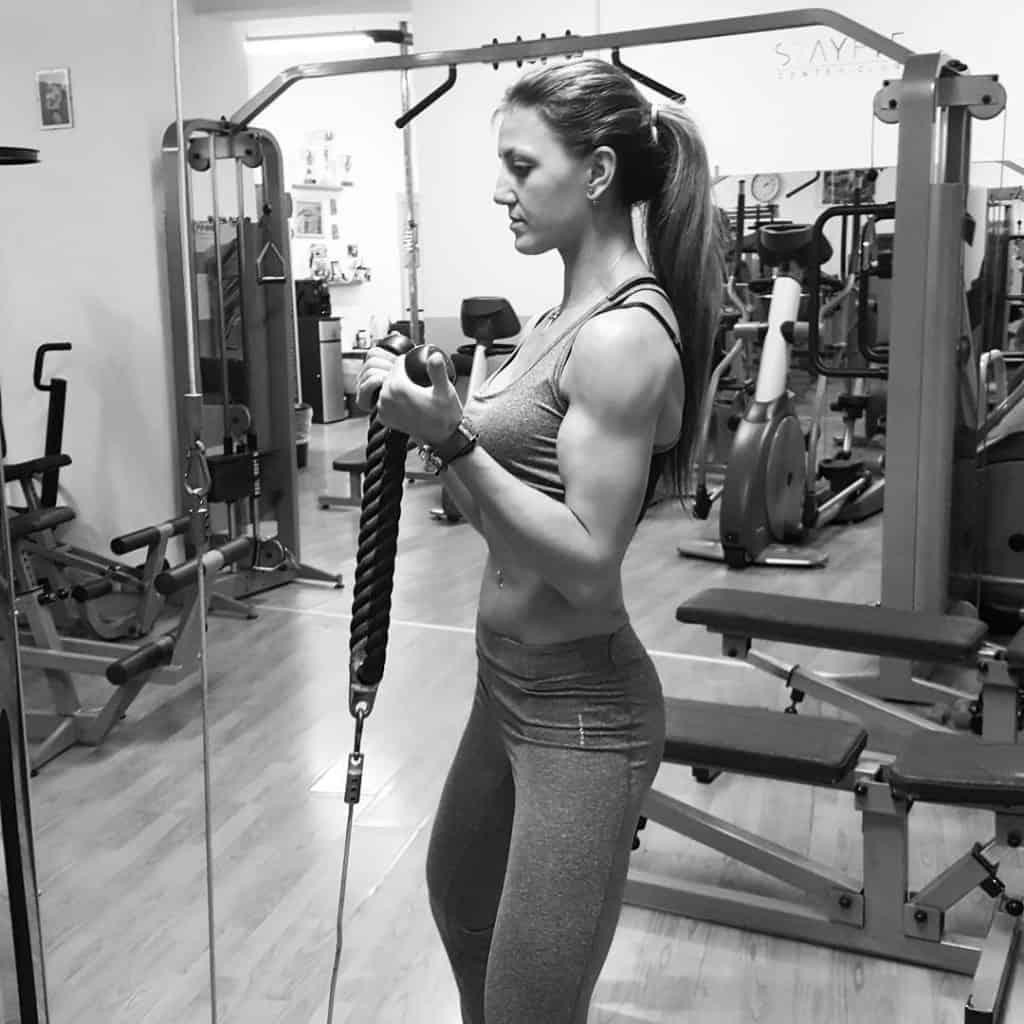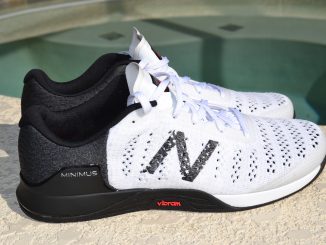Here’s a comprehensive list of terms and lingo you’ll run across in the gym. We’ll provide definitions for all the terminology that is pervasive in modern fitness methods. But it’s more than a list of terms – you’ll also find out about some of the current popular programs and personalities. We cover CrossFit and just about everything else you may hear about.
1RM – 1 Repetition Max
1RM is your 1 Repetition Max – This is the absolute maximum weight you can lift for 1 complete repetition of an exercise (with correct form). Commonly used to gauge progress in the big compound or power movements – for example you likely know your 1RM for bench press, squat, deadlift, cleans, and jerks. It’s also commonly used to base the percentages for sub-maximal lifting. For example, a hypertrophy workout may specify using 70% of your 1RM for 10 reps.
The RM (Repetition Maximum) concept can be further expanded to other rep ranges – for example, your 3RM is the maximum weight you can lift for 3 reps, your 5RM is max weight for 5 reps, etc.
5/3/1 (Wendler)
5/3/1 is a strength and hypertrophy training program created by former powerlifter and strength trainer Jim Wendler. 5/3/1 involves using 90% of your 1RM for the key compound movements used to build strength (Squat, Deadlift, Bench Press, Overhead Press, etc.) in week-long “waves”. The first wave uses 5 rep sets, second wave uses 3 rep sets, and lastly a 5 rep, 3 rep , and 1 rep set in the final wave. A deload week is also incorporated.
Air Squat
A squat without any weight, such as a dumbbell or barbell.
ATG – Ass To Grass or Ass To Ground
ATG is an acronym for Ass To Grass or Ass To Ground. As applied to any squat movement (front squat, back squat, air squat) it refers to getting as low as possible.
AMRAP – As Many Rounds (or Reps) as Possible
AMRAP can be dual meaning – As Many Reps As Possible or As Many Rounds As Possible. It’s a strength and conditioning (muscular endurance) training technique. The goal is to perform as many repetitions (“reps”) of an exercise movement as possible, or “rounds” of multiple exercises (such as push-ups, pull-ups, and squats). AMRAP may also specify a timeframe in which the work must be completed. AMRAP is popular in CrossFit. Find out more about AMRAP here.
Back Squat
A squat with a loaded barbell on the shoulders. Can be further sub-divided into “low bar” and “high bar” variants, depending on where the barbell is carried. High bar involves a more upright body position and carrying the bar on the trapezius muscle, while low bar involves more forward lean and holding the barbell just above the posterior deltoids.
Box – A CrossFit style gym
A box is a CrossFit gym. The origin of the usage is that CrossFit gyms are normally pretty sparse, just a big open or warehouse style building.
Box Jump
An exercise that involves jumping from the floor onto a box, step, or other elevated platform. Done for reps.
Burpee
The burpee is an exercise move that requires you drop to the ground, perform a push-up, then jump forward into a squat and then jump as high as possible.
BW – Body Weight
BW is an abbreviation for Body Weight. It is typically applied to exercises (as in Body Weight squat) or referring to a maximum lift , such as a triple body weight deadlift.
C&J – Clean and Jerk
C&J stands for the Clean and Jerk – an Olympic weightlifting move that emphasizes the use of power to move a barbell from the floor to the shoulder rack position (the clean) and then overhead (the jerk).
C2
C2 refers to the Concept 2 rowing machine, considered a best in class piece of equipment in CrossFit training. Rowing is a full body exercise that is easy on the joints and is very popular in CrossFit.
CFT – CrossFit Total
CFT is your CrossFit Total – the total amount of weight you can lift in the squat, deadlift, and press. CrossFit theory considers the overhead press to be a more useful measure of strength compared to the bench press. Compare to the powerlifting total.
Chin-up
A chin-up is done with a bar and a supinated grip (palms facing you). Compare to the pull-up. Chin-ups are generally easier than pull-ups.
Chipper
A CrossFit workout that involves a variety of different exercises in high volume (with lower weights). You complete the exercises one at a time, for all reps, thereby “chipping” away at completion. An example chipper might be: 50 Russian Twists, 40 Jumping lunges, 30 KB swings, 20 Press ups, and 10 lateral jump burpees. Compare to couplet and triplet.
Clean
Moving a loaded barbell or dumbbell from the floor to the rack position in one continuous movement. Additional variations include the power clean, squat clean, and hang clean. In all forms of the clean, technique is critical. It’s a power movement, and must be done quickly.
Couplet
This is another CrossFit term for rounds involving two different exercises. An example might be 7 rounds of 3 cleans, followed by 4 reps of ring handstand push-ups. Compare to triplet and chipper.
CrossFit Games
The CrossFit Games are an annual competition, sponsored by CrossFit Inc. Anyone can participate in the games. There are 3 stages – the Open, Regionals (where regional champions are determined), and finally the Games themselves. The winner is titled to be the “Fittest on Earth” (man and woman).
CrossFit Open
The CrossFit Open is the first stage of the CrossFit Games. The Open allows anyone to compete – and scores are submitted online. Hundreds of thousands of people take part in the Open, which is a yearly event.
CrossFit Regionals
The second stage of the CrossFit Games. The top athletes from the open are chosen to participate in a number of locations around the world. After this, the top athletes from each region are qualified to compete in the CrossFit Games.
Deload
A Deload is a period of time in which you lift less weight, reduce volume, or both. It is typically a week long in length and is meant to give the body time to recover after an intense training cycle. Theoretically a deload week can retain more neuromuscular efficiency when compared to a total rest period incorporating no activity. See also Rest Day.
DNF – Did Not Finish
DNF stands for Did Not Finish. Commonly used in CrossFit.
DOMS – Delayed Onset Muscle Soreness
DOMS, or Delayed Onset Muscle Soreness, is the phenomenon by which a strenuous workout can be produce deep muscle pain for 24-48 hours or more after a workout. It’s particularly prevalent in eccentric movements, or when attempting movements or weights previously not used.
Double-unders (DU)
Using a jump rope, spin the rope around twice for each jump. Popular in CrossFit. Find out how to do a double-under.
EDT – Escalating Density Training
EDT is Escalating Density Training. It’s a hypertrophy training technique (think big muscles). The goal is to perform as many reps as possible in a given timeframe, using antagonistic exercises, which work opposing muscle groups. “Density” refers to the concept as doing as much total work as possible in the time allotted. “Escalating” refers to trying to break your PR (Personal Record) of total reps every time you train. Find out more about EDT here.
EMOM – Every Minute On the Minute
EMOM, or “Every Minute On the Minute” is an intensity technique for conditioning training. This is an interval workout method closely tied to CrossFit and other popular training methods. Start the clock or timer, on the start of the minute, perform the chosen exercise for the specified number of reps, rest for the remainder of the minute. Finally, repeat for as many intervals as required. A simple example: Perform 10 body-weight squats, every minute on the minute for 10 minutes total. Find out more about EMOM here
For Reps
An exercise performed for maximum number of repetions, meaning keep track of the number of completed reps, and strive to the most reps possible. Compare to for time and for weight.
For Time
An exercise performed for a minimum of time, meaning keep track of time, and strive to complete the number of repetitions in the minimum amount of time. Compare to for reps and for weight.
For Weight
An exercise performed for maximum weight, meaning keep track of the maximum weight lifted. Compare to for reps and for time.
Front Squat
The Front Squat is a squat done with the barbell in the rack position, in front of the body. It involves a much more upright posture than the back squat and involves the quadriceps muscles to a greater degree. The front squat is often used by Olympic weightlifters to build strength because it is an essential component of a squat clean.
The Girls
The Girls refers to the CrossFit “Girls” workouts – Fran, Chelsea, and Annie. They are benchmark WODs that recur often, but they are very challenging.
GHR – Glute Ham(string) Raise
The GHR, or Glute Ham Raise, is an exercise done with a special bench known as a Glute Ham Developer. It involves having the lower legs locked into position against a stationary platform and elevating the upper leg and body by use of the hamstrings, glutes, and lower back.
GPP – General Physical Preparedness
GPP, or General Physical Preparedness, is the concept of being ready to perform a variety of athletic or physical endeavors that may require different aspects of strength, power, and endurance.
Hero WOD
The Hero WOD is a challenging workout named after a military serviceman, police, or firefighter who died in the line of duty. They are extra challenging and are meant to be a tribute to the sacrifices made. “Murph” is an example of one of the Hero WODs.
HIIT – High Intensity Interval Training
HIIT, or High Intensity Interval Training, involves alternating short bursts of high-intensity exercise followed by periods of either rest or lower-intensity work. Sprints are a good example of an interval training method – 10 to 12 seconds of all out effort, followed by rest. Several studies have shown superior training and health effects as compared to “steady state” or long duration cardio exercise. Tabata is perhaps the most popular form of HIIT.
HSPU – Hand Stand Push-Up
HSPU, or hand stand push-up is a push-up motion done in a hand stand. Commonly done with feet against the wall for stability (or at least that’s the best way to get started with this.
Hypertrophy
Hypertrophy is training muscles to be big rather than just strong. You typically use a lot of volume with medium weights (70-80% of 1RM) and with short rest periods (30 seconds to 1 minute are common.) Also known as bodybuilder training.
Interval Training
Interval Training is a type of training that involves a series of low- to high-intensity workouts interspersed with rest or relief periods. The high-intensity periods are typically at or close to anaerobic exercise, while the recovery periods involve activity of lower intensity. See also HIIT.
K2E – Knees To Elbows
K2E, or Knees To Elbows, is an exercise that involves hanging from a chin-up bar and bringing the knees to the elbows. This is a core strength and endurance movement.
Kettlebell
A Kettlebell is an iron or steel resistance device of Russian ancestry. It resembles a cannon ball with a handle. It’s unique form factor and center of mass allows it to be used safely for a large number of single and double arm exercises, including ballistic and swinging exercises. Traditionally, kettlebells come in increments of poods which are equivalent to 16 kg/35 lbs. Find out more about kettlebells.
Kip
Kip or Kipping is applying full-body momentum and speed to complete an exercise move. Most often applied to pull-ups, it’s also possible with handstand push-ups and toes-to-bar. It can be incorporated into any movement where momentum can be used to increase the number of reps complete. Compare to strict.
Ladder
A ladder is a workout where the reps (or weight) increase for each round. For example, in a kettlebell swing and burpee workout, the first round will require 1 rep of each, the 2nd will require 2 reps of each, and the 3rd three reps of each. A weight based example might be 5 squat cleans, adding 20 lbs. to the bar each round.
Metcon
Metcon, short for metabolic conditioning, is a short but intense workout that will involve extreme cardio exertion.
Muscle-Up
A Muscle-Up is performed on a bar or rings, and is a combination of a pull-up and a dip. This is a very challenging move, especially when using Olympic rings.
MWOD
The MWOD, or Mobility Workout Of the Day, is a workout focused on flexibility and stretching. Mobility WOD was first popularized by Dr. Kelly Starrett.
OHP – OverHead Press
OHP is an abbreviation commonly used for the Over Head Press in Starting Strength, or simply the press. See press for more details.
Overhead Squat
The Overhead Squat is a squat movement performed with a loaded barbell held overhead. Sometimes abbreviated as OHS.
Parallettes
Parallettes are small gymnastics devices, employed in pairs, used primarily to simulate the parallel bars that can be found in professional gymnasiums. Parallettes are similar to pushup bars, or dip bars, but they are generally longer and lower to the ground.
Powerlifting Total
Your Powerlifting Total is the total amount of weight you can lift in the traditional contested powerlifting exercises: squat, bench press, and deadlift. Those are the lifts used in powerlifting competitions.
PB – Personal Best
PB stands for Personal Best. This is your all time best on a performance – weight lifted, reps performed or perhaps for time (or all 3!). Another name for a Personal Record.
Pistol
A Pistol is a one-legged squat. It requires strength in balance in each leg individually and is substantially more challenging than a two legged squat.
Pood
A pood (Pd) is a traditional Russion measure of weight, commonly used with kettlebells. One pood is 16 Kg, or 35.2 Lbs.
PR – Personal Record
PR stands for Personal Record. This is your all time best on a performance – weight lifted, reps performed or perhaps for time (or all 3!). PRs are something that help drive motivation in the gym. Another name for a Personal Best.
Press
The Press or Overhead Press involves lifting a loaded barbell from the shoulder to full arm extensions overhead, with a shoulder width grip on the bar. As compared to the bench press the overhead press is considered a more “functional” exercise and builds more balanced strength through the posterior musculature (traps, deltoids, etc.). Sometimes abbreviated as OHP. The press is an essential movement for both CrossFit and the Starting Strength methodologies.
Pull-up
A pull-up is an exercise that is done by lifting your self to the bar using a pronated (palms facing away from you) grip. Compare to the chin-up.
Push Press
The Push Press is an over head press performed with the addition of momentum generated by a slight dip and straightening of the knees. This allows the trainee to utilize more weight, and generate additional stress. Compare to press, which is the movement performed in a strict fashion.
Rack Position
The Rack Position involves holding a loaded barbell on your collar bone and anterior deltoids with arms upright, but with a minimum of grip on the bar.
Renegade Rows
Renegade Rows are performed in the elevated push-up position using dumbbells and require alternately rowing each dumbbell.
Rep or Reps
A Rep is a single repetition of an exercise. The plural form is Reps. Reps are performed in sets. It’s common to hear “3 sets of 5 reps”, or similar. See also sets.
Rest Day
Rest Day refers to a recovery day, upon which no intense exercise is performed. Considered a necessity for productive training over the long term.
Rhabdo (Rhabdomyolysis)
Rhabdo or Rhabdomyolysis is a is a condition in which damaged skeletal muscle breaks down rapidly. Symptoms may include muscle pains, weakness, vomiting, and confusion. There may be tea-colored urine or an irregular heartbeat. Some of the muscle breakdown products, such as the protein myoglobin, are harmful to the kidneys and may lead to kidney failure. The muscle damage is most often the result of a crush injury, strenuous exercise, medications, or drug abuse. Rhabdo is potentially a life threatening condition!
ROM – Range Of Motion
ROM, or Range Of Motion, refers to the full movement potential of a joint, or exercise, and is commonly used to specify “Full Range Of Motion”, meaning to complete the exercise using the complete extent of flexion and extension. For example, “quarter squats” where the parallel plane of the knee and hip joint is not broken is not considered full range of motion.
Rucking
Rucking is walking with a loaded backpack (and not just in the woods!). A “ruck” is military slang for a backpack. This is a great exercise that’s simple, low impact and boosts calorie burn tremendously. Find out more about rucking.
Ruck Plates
Ruck Plates are specially designed weight plates for rucking. They are the most efficient option for a size to weight ratio leaving room in your pack for other items, and they work best with a rucking backpack. Find out more about rucking.
Rx or As Rx’d
Rx – “as prescribed”, meaning you should perform the workout exactly as specified, without any modifications.
Set or Sets
A Set is a sequence of repetitions of an exercise, performed usually without rest. Common usage includes: “3 sets of 5 reps” – or 15 reps total spread across 3 sets (with rest in-between).
Snatch
The snatch is an Olympic lift that involves moving a barbell from the floor, to overhead with the use of straight arms. Variations include the power snatch and hang snatch.
So You Think You Can Squat
So You Think You Can Squat is a YouTube video series produced by ElitesFTS and featuring powerlifter Matt Wenning. It is a multi-part series that explains in great detail how to utilize proper box squat form for powerlifting training. The first part of the series can be viewed here.
Squat
The Squat is an exercise movement as follows: feet shoulder width apart with feet angled slightly outward. Keeping upper body rigid, bend at the knees lowering upper body in straight line. Can be performed without weight as anair squat or with a loaded barbell, dumbbell, or kettlebell in several variations. See front squat, back squat, and overhead squat.
Squat Every Day
Squat Every Day is a training methodology that requires daily exercise of the squat with a maximal amount of weight. The Daily Max concept is used, which requires the lifter to work up to a daily maximum that may be below their Squat 1RM. Squat Every Day involves a lot of volume at heavy weights but can drive significant progress, after the body adjusts to the daily stress. It should be considered an ultra-high volume workout method.
Steady State Cardio
Steady State Cardio is simply a cardio workout that is a continuous, steady effort, as opposed to an interval training workout where you vary your energy output. Jogging is perhaps the most popular form of steady state cardio. Compare to High Intensity Interval Training.
Strict
Strict refers to performing an exercise with very strict form, and minimizing or eliminating the use of momentum. For example, a strict pull-up is very different (slow and deliberate) compared to kipping – which involves a lot of speed and momentum. Compare to kip or kipping.
Tabata
Tabata is a high intensity training method for conditioning and fat-burning. Perform an exercise with as much intensity as possible, and as fast as good form permits for 20 seconds. Rest for 10 seconds. Repeat for 8 work and rest cycles (a total of 4 minutes.) Find out more about Tabata here.
Thrusters
Commonly used in CrossFit, Thrusters require you to hold a loaded barbell in rack position, drop down in asquat position with the barbell in the rack position, then return to standing position in an exploding motion, pushing the barbell over you head.
Triplet
Like a couplet but with three different movements in each round, strung together into a sequence. Compare to couplet and chipper.
VO2 Max
VO2 max is the measurement of the maximum amount of oxygen that an individual can utilize during intense, or maximal exercise. It is measured as milliliters of oxygen used in one minute per kilogram of body weight
Wall ball
In CrossFit, a Wall Ball exercise is performed by holding a medicine ball, exploding from theing squat position, and toss the ball above the head 8-10 feet against the wall and catch.
Wendler (Jim)
Wendler is often used as short-hand for indicating that Jim Wendler’s 5/3/1 training methodology is being used.
WOD – Workout Of the Day
In CrossFit, the Workout Of the Day, or WOD, is the recommended daily workout. The main CrossFit website publishes a WOD, as do most boxes (aka gyms, in CrossFit lingo).

Hook Grip
Greyskull LP (gslp)
bulgarian method
Jonnie Candito
Stronglifts
Photo Credits
deadlift photo and other fitness model images are property of : ExtensivelyReviewed barbell deadlift Fitness model gym workout exercise via photopin (license)

Tim is the founder of FitAtMidlife.com – an avid gym rat for 30+ years, he’s a reviewer of many, many shoes – and founder of the Speed Bag Gathering – the world’s only gathering of speed bag punching enthusiasts. See more gym reviews at Tim’s YouTube channel.






